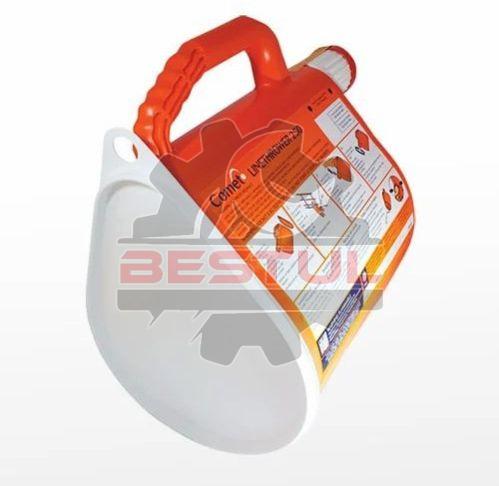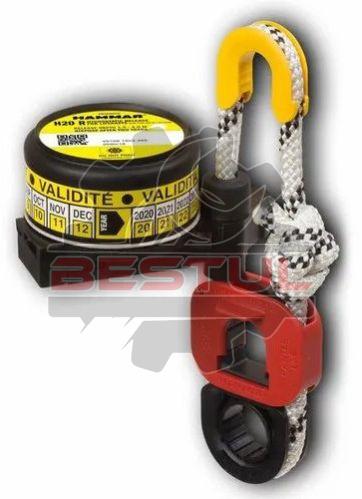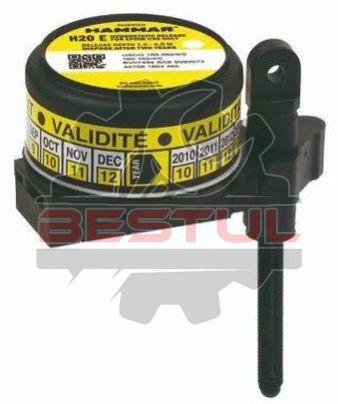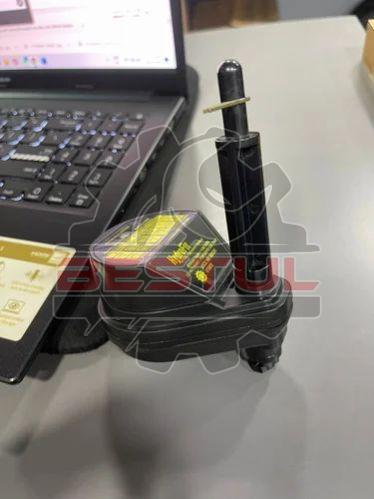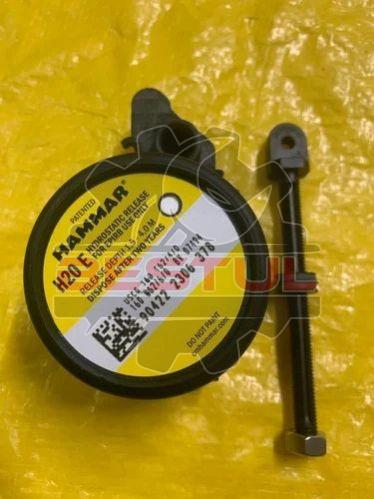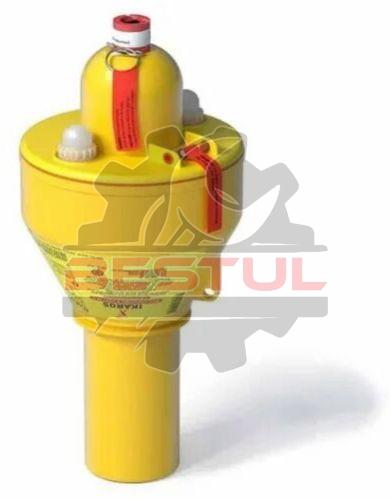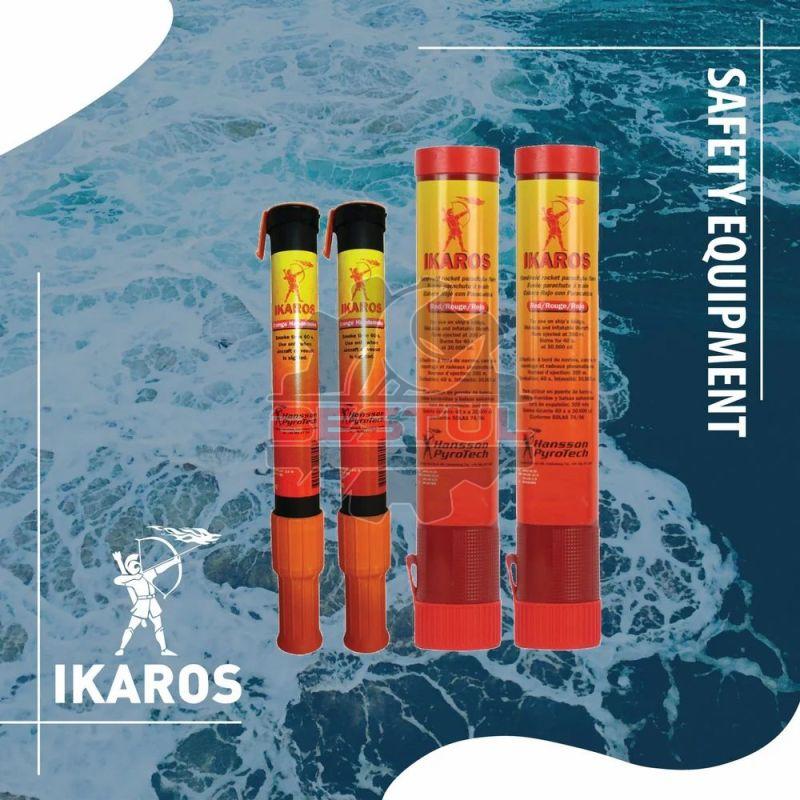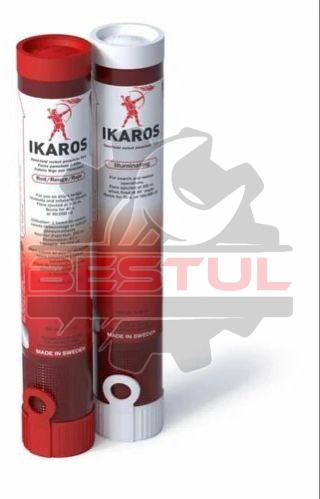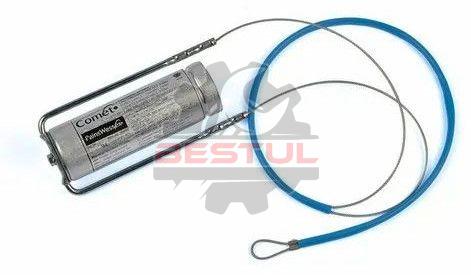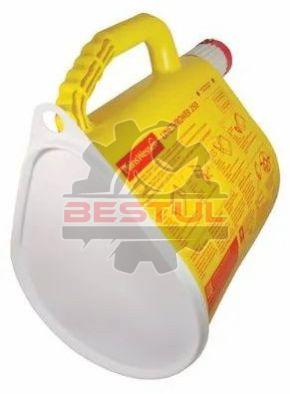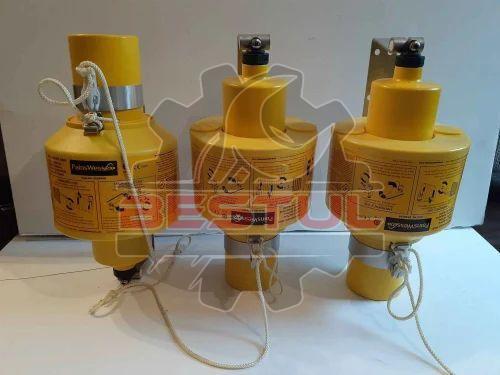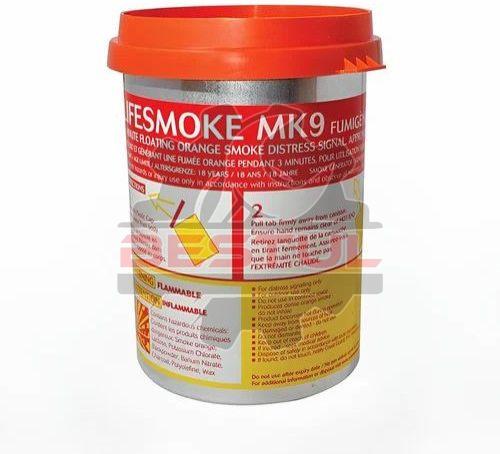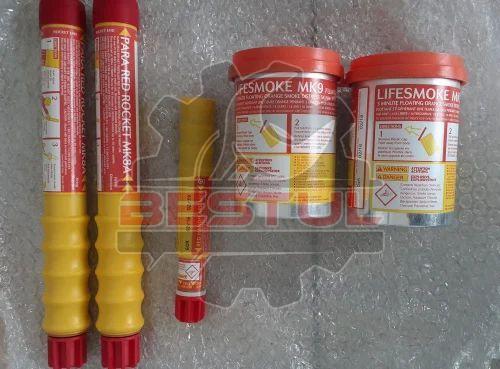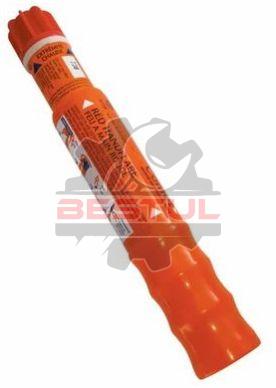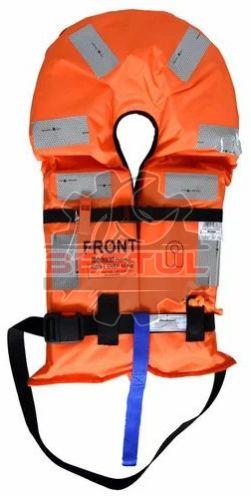Marine Safety Equipment
Leading Exporters, Wholesaler, Manufacturers, Importer and Trader of Comet Line Throwing Apparatus, Hammar H20R Hru For Life Rafts, Hammer HRU For Epirb H20e, Hydrostatic Release Unit, Hydrostatic release unit for EPIRB Hammar H20E, Ikaros Man Over Board Marker With Light & Smoke, Ikaros Red Parachute Rocket, Ikaros Rocket Parachute Hand Flare, Line Thrower Rocket Painswessex 50080, Line Throwing Apparatus LTA, Man Overboard Light And Smoke Signal, Painswessex Orange Smoke Signals, Para Red Rocket Mk8A, Red Hand Heldflares and Safety Life Jacket from Mumbai.
| Business Type | Exporter, Supplier |
| Brand Name | Comet |
| Gross Weight | 4.7kg (10.36 lb.) |
| Net Weight | 4.4 kg (9.7 lb.) |
| Line breaking strain | >2 kn |
| Explosive Content Max | 106g (3.74 oz.) |
| Length | 33 cm (13.0") |
| Height | 31.3 cm (12.3") |
| Diameter | 20.5 cm (8.1") |
Marine Distress Signals
Marine distress signals are critical for ensuring safety at sea. Here are some common types:
-
Visual Signals:
- Flares: Red or orange flares are commonly used and can be seen from long distances.
- Smoke Signals: These are effective during the day to indicate distress.
- Reflective Devices: Mirrors or reflective tape can signal for help using sunlight.
-
Audible Signals:
- Sound Signals: A whistle, horn, or other sound-producing device can alert nearby vessels.
-
Electronic Signals:
- EPIRB (Emergency Position Indicating Radio Beacon): Automatically transmits distress signals to satellites.
- VHF Radio: Sending a mayday call on channel 16.
Linethrower 250
If you're specifically referring to the Linethrower 250, it’s a device used to deploy a line over a distance, which can be critical in rescue scenarios. It may not be a distress signal in itself, but it can be an invaluable tool in conjunction with other signals.
Important Tips
- Always have distress signaling equipment onboard and ensure it's in good working condition.
- Familiarize yourself with local regulations and best practices for signaling distress.
- Practice using the equipment to be prepared in an emergency.
Visual Distress Signals
-
Flares:
- Types: Handheld flares (burn for about 60 seconds) and aerial flares (shot into the sky).
- Usage: Fire flares at the first sign of distress or when you see a vessel or aircraft that may assist you.
-
Smoke Signals:
- Usage: Ideal during the day. The bright colored smoke can be seen from afar.
- Duration: Generally burn for about 30 seconds to a minute.
-
Day/Night Signal:
- Orange Flag: A flag with a black square and circle is recognized as a distress signal.
- Reflectors: Use during the day to catch light and attract attention.
2. Audible Distress Signals
- Sound Devices:
- Whistle or Horn: Three short blasts indicate distress.
- Bell or Other Sounds: Can be used in conjunction with visual signals to indicate a situation needing assistance.
3. Electronic Distress Signals
-
EPIRB:
- Function: Automatically activates when submerged and sends a distress signal with your location.
- Registration: Must be registered with appropriate authorities to provide effective rescue.
-
VHF Radio:
- Channel 16: Use for emergency communications; make sure to transmit your position and nature of distress.
- Mayday Call: The standard distress call; repeat three times for clarity.
Linethrower 250Purpose and Functionality
- Design: A compact, portable device designed to shoot a line (rope) over a distance.
- Usage:
- Used in rescue situations to throw a line to a person in the water or to another vessel.
- Enables the retrieval of individuals safely without the need for direct contact.
Benefits
- Safety: Reduces the risk to rescuers by allowing them to keep a safe distance while securing a line.
- Efficiency: Helps facilitate quick and effective rescues, particularly in rough seas or when a direct approach isn’t feasible.
| Business Type | Exporter, Supplier |
| Brand | HAMMAR |
| Release depth | 1.5-4.0 meters |
| Breaking strength of white rope sling | min 15kN |
| Breaking strength of red weak link | 2.2 +/- 0.4kN |
| Dispose | After 2 Years |
| Weight | 166 grams |
Mail your Enquiry/Requirement for best rates.HRU Hammar H20R: It is a Hydrostatic release gear Hammer is used for float free EPIRB's Model is available either in plastic bolt or rope sling
Product Details:
- Make: Hammar
- Model: H20R, H20E
- Material: glass fibre reinforced nylon
- Work at Angle: Any angle
- Water pressureDepth: 1,5 -4,0
| Business Type | Exporter, Supplier |
| Screen Size | 1.5-4m |
| Brand Name | Hammar |
| Material | Glassfibre Reinforced Nylon |
| Packaging Type | Box |
| Model | HE-0102 |
| Color | Yellow |
| Weight | 0.12kg |
| Product Specification: | USCG approved |
| Dimension | 17 x 9 x 7 cm |
| Country of Origin | Made in India |
| Business Type | Exporter, Supplier |
| Material | Plastic |
| Usage/Application | Rust remover, cleanining, drifting, straightening |
| Display Type | Digital |
| Color | Black |
| Grade | Semi-Automatic |
| Packaging Type | Box |
| Tank Size (litre) | Approximately 2-4 Gallon |
| Max Pressure (Bar) | 10000 |
| Release Depth | 2-4 |
| Type | Hydrostatic Release Unit |
fits nicely and installs easily in eprib holder. This is the second time I have had to update as the expriation date has passed. You get two years from date of manufacture, but the unit itself is marked for three years.
| Business Type | Exporter, Supplier |
| Brand Name | HAMMAR |
| Dispose After | 2 Years |
| Release Depth | 1,5 - 4,0 M |
| Weight | 200 g |
| Approval | MCA and USCG |
| Type | Hammer H20, HE-0100/HE-0102 Material: glassfibre reinforced nylon |
| Dimension | 17 x 9 x 7 cm |
The Hammar H20E Hydrostatic Release Unit (HRU) is a component used in conjunction with Emergency Position Indicating Radio Beacons (EPIRBs). In the event of a vessel sinking, the HRU automatically releases the EPIRB from its mounting bracket, allowing it to float to the surface and transmit its distress signal.
Here's how it generally works:
Water Pressure Activation: The HRU is triggered by the increasing water pressure when a vessel sinks. Once the water pressure reaches a certain level (usually around 1.5 to 4 meters underwater), the HRU activates.
Release Mechanism: Upon activation, the HRU releases the EPIRB from its mounting bracket. This ensures that even if the vessel is submerged, the distress signal is sent.
Float to Surface: The EPIRB, now released from the vessel, rises to the surface of the water. It's designed to float and continue transmitting its distress signal.
Distress Signal Transmission: Once on the surface, the EPIRB begins transmitting its distress signal on designated emergency frequencies, allowing search and rescue teams to locate the vessel and its crew.
Battery Life: EPIRBs typically have a battery life of several years, ensuring they remain operational in case of emergencies. However, it's important to regularly check and replace the battery as needed to ensure functionality when it's needed most.
The Hammar H20E is known for its reliability and effectiveness in releasing EPIRBs in emergency situations, offering peace of mind to mariners in case of vessel emergencies.
| Business Type | Exporter, Supplier |
| Surface Finish | Polished |
| Packaging Type | Box |
| Material | Plastic |
| Performance | Light 2 cd >2 hours |
| Weight (including Bracket) | Approx. 5 Kg |
| Smoke duration | >15min |
| USCG no. | USCG161.110/EC0575/MEDB000046Y (Light) |
| Dimensions | 200 x 500 mm |
| Ref. no. | 34 51 05 |
| Country of Origin | Made in India |
This distress signal is designed to be mounted vertically on the ship’s bridge, with one on the port and one on the starboard side.
It should be attached behind or to the side of a lifebuoy at a minimum of five meters above the water line. When the lifebuoy is thrown overboard, the MOB is pulled with it and as it leaves its bracket,
it automatically emits light and smoke to attract attention to the person in the water. On smaller vessels, it can be mounted on the wheelhouse bulkhead and launched manually.
The MOB light and smoke signal has a lithium battery and can be used as a day and night marker. It is approved globally and meets the latest SOLAS regulations.
| Business Type | Exporter, Supplier |
| Weight | 420 g |
| Dimensions | 277 x 47 mm |
| Color | Red |
| Burning duration | >30 s |
| CE-approved | Yes |
| Light intensity | 100,000 cd |
| Flare ejection height | 300 m |
| Material | Polyester |
| Size | 12 Ft |
The IKAROS parachute rocket illuminating is used for search and rescue operations and is also used for training.
The rockets white light also acts as a day and night collision warning signal.
When dark it illuminates a big area.
It is easy operated with clear instructions. The light is clear white and should not be mistaken for the red parachute rocket.
| Business Type | Exporter, Supplier |
| Brand Name | Ikaros |
| Application | Marine/ Offshore,Ship |
| Color | Red |
| Is It Disposable | Disposable |
| I Deal In | New Only |
| Availability | Pune, Chennai, Ahmedabad, Bengaluru, Hyderabad, Vishakapatnam, Kochi, Vadodara, Kolkata, Delhi |
Ikaros Rocket Parachute Hand Flare
Purpose:
This flare is designed to signal distress, alerting rescuers to the location of the person in need of help. It is often used in situations where visual signaling from the ground or in the air is required, such as in emergency situations at sea or in remote areas.
Features:
- Rocket-Powered: The flare is launched using a small rocket mechanism, which propels the flare into the air.
- Parachute: Once ignited, the flare is carried aloft by a parachute, allowing it to stay visible for a longer period of time. The parachute ensures that the flare slowly descends, creating a continuous visual signal that lasts for about 30 to 60 seconds or more.
- Bright Light: The flare emits a bright, intense light visible from long distances, typically in the form of a red or orange flame. This is highly visible at night or in low-light conditions.
- Compact and Portable: The flare is hand-held, making it easy to carry and deploy in emergency situations.
- Waterproof or Water-Resistant: Many models are designed to be waterproof or resistant to ensure functionality even in wet or marine conditions.
- Uses:
- Search and Rescue Operations: The flare is used to guide rescue teams or aircraft to the exact location of the person in distress.
- Emergency Signaling: It is often used in maritime settings (on boats, ships, or life rafts) or aviation (for downed aircraft) to signal distress.
- Duration and Visibility:
- The parachute flare typically burns for 30 to 60 seconds, providing continuous high visibility.
- Its effective range of visibility is generally several kilometers, depending on weather conditions and terrain.
- Safety Notes:
- The flare must be deployed away from any flammable materials to avoid accidental fires.
- It should only be used in a genuine emergency situation as it is a distress signal.
| Business Type | Exporter, Supplier |
| Surface Finish | Polish |
| Temp Store MiN | -30 DegreeC |
| Self Life | 3yrs |
| Weight | 4,3 Kg |
| Packaging | Box |
| Temp Op Max | 65 C (149.0 DegreeF) |
| Temp Op Min | -30 DegreeC |
| Ignition Method | Twist-grip Trigger |
| Temp Store Max | 75 C (167.0 DegreeF) |
| Country of Origin | Made in India |
| Business Type | Exporter, Supplier |
| Packaging Type | Box |
| Material | Plastic |
| Temp Op Min | -30 DegreeC |
| Temp Store Max | 75 C (167.0 DegreeF) |
| Temp Store Min | -30 DegreeC |
| Weight | 4,3 Kg |
| Temp Op Max | 65 C (149.0 DegreeF) |
| Self Life | 3yrs |
| Usage | Line Throwing Apparatus |
| Ignition Method | Twist-grip Trigger |
Fired by a twist grip and used for passing a 4mm dia. Line from ship to ship and ship to shore or for rescuing a swimmer in distress. Ships typically have to carry 4 units to comply with SOLAS regulations.
| Business Type | Exporter, Supplier |
| Brand Name | Pains Wessex |
| Temp Op Max | 30 C (86.0 DegreeF) |
| Temp Op Min | 1 C (33.8 DegreeF) |
| Height | 375mm (14.76 inches) |
| Diameter | 183mm (7.20 inches) |
| Net Explosive Content | 1.287kg |
| Weight | 3.3Kg (7.27 lbs) |
| Weight Including Bracket | 3.85Kg (8.5lbs) |
| Packaging Type | Box |
| Country of Origin | Made in India |
In event of a man overboard emergency, the marker is automatically deployed by releasing the attached 4kg lifebuoy and marks position of the casualty. Or signal can also be manually deployed.
| Business Type | Exporter, Supplier |
| Brand | Pains Wessex |
| Product Type | Safety Flares |
| Color | orange |
| Diameter | 82 mm (3.2 inches) |
| Weight | 365 g (12.85 oz) |
| Is It Disposable | Non Disposable |
| Is It Rust Proof | Rust Proof |
| Is It Water Proof | Water Proof |
| I Deal In | New and Second Hand |
| Flame Resistance | Yes |
Orange smoke signals are a type of distress signal used in various emergency situations, particularly in maritime environments. Here’s a quick overview of their features and uses:
Features:
- Color: The smoke is typically a bright orange, which is highly visible and can be seen from a great distance.
- Visibility: The signal creates a large, dense cloud of orange smoke, which is effective in low visibility conditions like fog, rain, or at night.
- Duration: The smoke signal generally lasts for several minutes, allowing enough time for rescuers to locate the signal.
Uses:
- Maritime Safety: Used by sailors and boaters to signal distress or their location if they are in trouble.
- Emergency Situations: Useful in any situation where visibility is poor, such as in wilderness survival scenarios or during search and rescue operations.
Deployment:
- Activation: Typically, the signal is activated by pulling a tab or lever, which ignites the smoke-producing compound.
- Handling: It’s important to follow safety instructions when deploying smoke signals to ensure they are used effectively and safely.
Regulations:
- Compliance: In many regions, there are regulations governing the use and storage of distress signals like orange smoke. Ensure compliance with local maritime safety regulations.
| Business Type | Exporter, Supplier |
| Material | HDPE |
| Design | Specifications - Length: 287 mm (11.3") - Diameter at handle: 38 mm (1.5") - Diameter: 32 mm (1.25") |
| Color | Yellow |
| Product Type | Safety Flares |
| Application | EMERGENCY SIGNALS |
| Brand Name | Pains Wessex |
| I Deal In | New Only |
| Location | India |
| Country of Origin | Made in India |
Designed to withstand exceptional environmental exposure and to perform reliably even after immersion in water, the pull wire ignitor and imroved grip provides easy handling. Rocket ejects a white flare at 300m (1000ft), which burns for 30 seconds at 90,000 candela.
| Business Type | Exporter, Supplier |
| Color | Red |
| Product Type | Safety Flares |
| Usage/Application | Handheld flare |
| Brand Name | Comet |
| Is It Water Proof | Non Water Proof |
| Is It Rust Proof | Rust Proof |
| Is It Disposable | Non Disposable |
| Shape | Cylinderical |
| Country of Origin | Made in India |
A red hand flare signal is a type of distress signal commonly used in maritime or emergency situations. It is designed to be easily visible from a distance, especially in low light or nighttime conditions, to alert others to a distress situation. Here are some key points about red hand flare signals:
Purpose:
The primary purpose of a red hand flare is to attract attention and signal for help during emergencies, such as when a vessel is in distress at sea.
Visibility:
Red hand flares produce a bright red light that is easily visible, even from a considerable distance. This high visibility is crucial for alerting nearby vessels, aircraft, or rescue teams.
Duration:
Hand flares are typically designed to burn for a specific duration, providing a sustained and easily noticeable signal. The burn time is usually mentioned in the product specifications.
Ignition Mechanism:
Hand flares are typically ignited by pulling a tab or cap, which activates the flare. Some models may have additional safety features to prevent accidental ignition.
Water Resistance:
Since these flares are intended for use in marine environments, they are often designed to be water-resistant. This ensures that they remain functional even if they come into contact with water.
Storage and Expiry:
It's important to check the expiration date of hand flares and ensure they are stored properly. Flares that have passed their expiration date may not function correctly in an emergency.
Safety Precautions:
Users should follow safety guidelines and instructions provided by the manufacturer for proper use. This includes handling the flare carefully, keeping a safe distance from the burning end, and using it in an open area away from flammable materials.
Regulations Compliance:
Red hand flares should comply with relevant maritime regulations and standards. Check the product specifications or packaging for information on compliance with safety standards.
Storage and Transportation:
Ensure that you store and transport hand flares according to the manufacturer's recommendations. Some flares may have specific storage requirements to maintain their effectiveness.
Training:
Familiarize yourself with the operation of the hand flare before an emergency situation arises. Training on the proper use and handling of the flare can be essential for effective deployment.
It's important to note that the use of distress signals, including hand flares, should be in accordance with local regulations and laws. Additionally, boaters and mariners should be aware of the specific requirements for carrying and using distress signals as mandated by maritime authorities.
Certainly! Here are some additional considerations regarding red hand flare signals:
Packaging and Quantity:
Red hand flares are often sold in packs, and the quantity per pack can vary. Check the packaging to ensure you have an adequate number of flares for your vessel's size and the number of passengers.
Day/Night Use:
Some hand flares are designed specifically for nighttime use, while others may be visible during daylight as well. Verify the intended use of the flare, and if needed, consider having a combination of day and night signals on board.
Altitude and Visibility:
Understand the altitude to which the flare is likely to ascend. Higher altitudes can make the signal more visible from a greater distance. The packaging or product specifications should provide information on the expected altitude.
Signal Pattern:
Some hand flares produce a steady light, while others may have a strobe or flashing pattern. Understanding the signal pattern can be important for distinguishing distress signals from other lights at sea.
| Business Type | Exporter, Supplier |
| Size | Medium |
| Material | Nylon |
| Application | Floating |
| Brand Name | Markwel |
| Color | Orange |
| Weight | 140KG |
| Type | Safety Life Jacket |
| Wear Type | Reflective |
| Gender | Unisex |
| Is It Waterproof | Waterproof |
The "Markwel" inherently Buoyant lifejacket boasts many innovative features including:
- Lifting belt to aid with retrival
- Releasable buoyant line enabling wearers to "Buddy Up"
- Brand new features designed to minimize snagging
- Packets neatly stow away a whistle and floating line
- Fluorescent Orange Color of the lifejacket as per international standard
- All material used for manufacturing lifejackets tested and comply with ISO 12402-7; 2006(E)
- Approved for oversize person upto 140 Kgs.
Applicable Standards:
- SOLAS 74, as amended, Regulation III/4, III/7.2, III/34, X/3, 2000 IISC Codes VIII/8 8.3
- The LSA Code, Regulation I/1.2 and II/2.2
- IMO Resolution MSC. 81(70), MSC 200(80), MSC 201(81), MSC207(81), MSC 378 (93) and MSC 323(89) and MSC 368(93)
Safety Standards: Ensure that the life jacket complies with relevant safety standards, which may vary by region.
Buoyancy Rating: Check the buoyancy rating to ensure that the life jacket provides sufficient buoyancy for the intended use.
Fit: Select a life jacket that fits snugly and comfortably. It should be adjustable to accommodate different body sizes.
Type of Activity: Choose a life jacket suitable for the specific water activities you'll be engaging in (e.g., recreational boating, kayaking, fishing).
Durability: Look for high-quality materials and construction to ensure durability and longevity.
Visibility: Opt for a life jacket with reflective elements or bright colors for increased visibility in the water.
Proper Care: Follow care and maintenance instructions provided by the manufacturer to ensure the life jacket remains in good condition.
Always prioritize safety when participating in water activities, and make sure to use a properly fitted and suitable life jacket for yourself and others.

